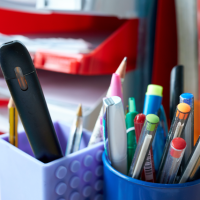With dramatic increases in students with anxiety and trauma from adverse childhood experiences (ACEs), educators must address emotional challenges in the classroom and rethink discipline. Research has shown that “children who have difficulty regulating their emotions have trouble learning in the classroom and are less productive and accurate when completing assignments,” (Graziano, Reavis, Keane, & Calkins, 2007).
To thrive inside and outside the classroom, it’s crucial for students to regulate emotions and build positive coping strategies. To help students focus and succeed, educators must equip students to handle and express emotions effectively and to manage their reactions. Rather than cracking down on impulsive, inappropriate, or disruptive behavior, school professionals should seek to help students understand misbehavior and regain their calm.
Emotional regulation, or the act of self-identifying and self-managing emotions, is a skill that can be taught. Educators can promote emotional regulation by coaching and supporting students through situations and providing them with a framework to reflect and recollect composure. The goal of emotional regulation is for students to recognize emotions as they happen, so they can change behavior.
Here are a few ways you can help regulate emotions:
1. Connect emotions and behavior.
- To develop mindfulness, have students identify how certain activities make them feel, and work with them on strategies for them to productively cope with these emotions. For example, if a test day makes a student nervous, they can plan to take certain actions such as studying with friends, going to review sessions, and getting a good night’s sleep.
- Build social-emotional learning into the curriculum to develop key competencies: self-awareness, social awareness, self-management, relationship skills, and responsible decision-making. For example, writing about emotions, analyzing perspectives and thought processes in literature, and participating in respectful dialogue with others can develop social-emotional skills.
2. Be patient and model emotional regulation (co-regulation).
- Rather than reacting immediately, wait to discipline students until you are calm and collected.
- Suggest the student goes and gets a drink of water, or take a few deep breaths before talking about the problem.
- Give non-judgmental and non-emotional feedback about what went wrong, why, and how the student could act differently in the future. Encourage students to reflect in order to reframe how they think and change how they feel.
3. Set up a proactive friend-in-need system.
- Make it a common classroom practice for students to reach out to a friend or classmate when they feel strong emotions arising.
- Cultivate a positive classroom environment, and encourage positive relationships among students through team-building and activities.
Incorporating Emotional Regulation Into Prevention and Intervention
Through scaffolding, small steps, and consistency, educators empower students to make good choices and to show resilience in challenging times. Often, the students who struggle with emotional regulation are students who are falling behind. While there will be consequences for poor behavior, the goal is to keep students feeling safe and connected.
At 3rd Millennium Classrooms, we design our online prevention and intervention courses with evidence-based practices to build emotional regulation skills and resist harmful behaviors like substance abuse and conflict.
Our courses will help students
- Understand the reasons and triggers for behavior
- Reflect on habits and consequences
- Learn protective behaviors and action plans to avoid problem behaviors
By strengthening your commitment to teaching emotional regulation, you can help students gain the control needed to manage their behavior. Learn more about our online prevention and intervention solutions by calling (888) 810 – 7990.
References
Graziano PA, Reavis RD, Keane SP, Calkins SD. The Role of Emotion Regulation and Children’s Early Academic Success. J Sch Psychol. 2007;45(1):3-19. doi:10.1016/j.jsp.2006.09.00




